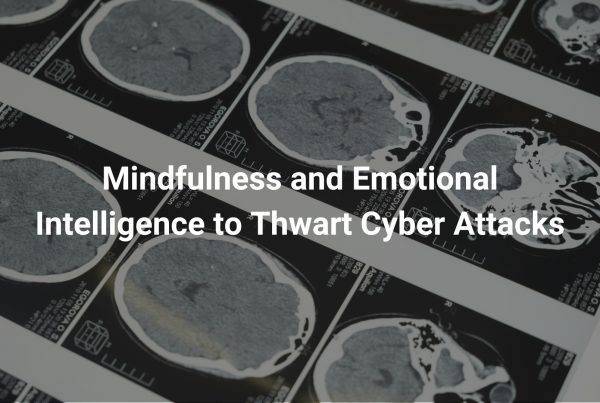WARNING
The following describes accounts of child sexual and physical abuse, which the Innocent Lives Foundation works to prevent. This blog contains content that some individuals may find disturbing or distressing in nature. Please be emotionally prepared before proceeding.
Names, locations, and other identifying information have been changed for the safety of the victims and the Innocent Lives Foundation team. Any similarity to actual names, living or dead, is purely coincidental.
“I’m so done with the ‘bad boy’ type.” Many of us have heard our friends say this, or maybe we’ve said it ourselves. We’re tired of being treated poorly and dealing with the constant stress of being in a relationship with someone who doesn’t consider our needs. We make these declarations, vowing that we are done with toxic relationships and ready to find someone who will treat us right.
So why, when a genuinely nice person comes our way, do we often find ourselves saying, “He’s just too nice for me,” and falling back into the pattern of seeking out the bad boy?
One of the main reasons for this is that our brains crave familiarity and predictability, even if it’s unhealthy. The patterns of toxic relationships become ingrained in our minds, making us feel oddly comfortable with them. When someone who treats us well comes along, it feels unfamiliar and uncomfortable, prompting us to retreat to the old, harmful dynamics we know so well. Understanding this can help us break the cycle and embrace healthier relationships. So, let’s start with why the brain is to blame.
Familiar Toxicity
The human brain is an energy-hungry organ, requiring significant energy to function because it handles so many critical processes. To conserve energy and reduce cognitive load, the brain reinforces behaviors and experiences that typically occur together, a concept known as “neurons that fire together, wire together.” This means that when we do something repeatedly, or two things often occur together, our brain strengthens their association by creating strong pathways connecting those neurons.
Predictable patterns require less mental effort because they fit into established neural pathways, allowing us to operate on autopilot. This cognitive efficiency is beneficial in many aspects of life and provides a sense of comfort because the brain prefers predictability. However, this preference for familiarity and comfort can trap individuals in unhealthy cycles.
For example, if a person experiences constant criticism in a relationship, their brain starts associating criticism with attention or engagement. This leads them to expect and even seek out similar patterns in future relationships, reinforcing the cycle of toxicity. As such, someone who has experienced emotional volatility in past relationships may unconsciously seek out partners who exhibit similar behaviors because their brain is wired to recognize and respond to these patterns. Even when negative, the predictability of these interactions provides a sense of control and certainty, which the brain craves.
What’s more, toxic relationships often involve a cycle of highs and lows, which can activate the brain’s reward system intermittently, similar to the way addictive substances do. The sporadic nature of these rewards releases dopamine, making the toxic relationship feel compelling. The brain’s reward system becomes accustomed to these intermittent reinforcements, driving a person to repeat and crave the same dynamics, even if they are unhealthy.
Unfamiliar Discomfort
Experiences outside our established neural pathways feel uncomfortable and unfamiliar, regardless of whether they are beneficial. For example, someone used to toxic relationships might find it strange when a partner consistently listens to and supports them without criticism. This creates a state of cognitive dissonance, which occurs when we hold two conflicting beliefs or attitudes at the same time. In this context, the positive behaviors of a healthy partner clash with the internalized expectations from past toxic relationships. Hence, the behaviors of a healthy partner can be unsettling because they lack the emotional volatility they are accustomed to.
For instance, if someone is used to being criticized and belittled, they might feel uneasy or suspicious when a new partner is consistently kind and supportive. Their brain expects criticism because that’s what they’re used to, but instead, they are getting kindness. This internal conflict makes it hard to fully accept and feel comfortable in a healthy relationship, as the brain needs time to adjust to the new experiences.
It’s also important to remember that toxic individuals often initially present themselves as exceptionally caring and attentive. This manipulation can make it challenging for someone with a history of toxic relationships to distinguish between genuine healthy behaviors and manipulative tactics. Even in the presence of a genuinely healthy partner, they may struggle with constant anxiety and doubt about the partner’s intentions. This is one of the reasons why individuals who have experienced manipulation in toxic relationships might be hypervigilant, always waiting for the “other shoe to drop.” They may interpret genuine kindness and stability with suspicion, fearing it’s a precursor to future toxicity.
Getting Comfortable With Uncomfortable
The good news is that, even though our brains may resist breaking old patterns, change is possible. Thanks to a remarkable ability called neuroplasticity, we can develop new patterns and connections at any stage of our lives. This is why educating yourself on healthy behaviors is so important. While it’s not our fault that we become accustomed to toxic cycles, it is our responsibility to recognize and change them. Making the effort to learn about healthy relationship dynamics and the common tactics of manipulation can empower you to recognize genuine healthy behaviors and avoid falling back into old patterns. This education can also help you develop strategies to manage and improve your behaviors.
If you’re not sure where to start, many books and online resources provide valuable information about healthy relationships. Seek out works by reputable authors and psychologists who specialize in relationship dynamics. Additionally, many communities and organizations offer workshops and seminars on relationship skills, providing excellent opportunities to learn and practice new behaviors in a supportive environment.
This process is not always comfortable and takes time, so be patient with yourself. If you find it challenging to break these patterns, being honest with trusted friends or family members can enable them to support you. Sharing your struggles and progress with people who care about you can also provide encouragement and accountability.
Breaking free from the cycle of toxic relationships is challenging. Still, the power of neuroplasticity means we can rewire our brains and develop new, healthier patterns at any stage of life. By educating yourself and seeking support, you can break free from toxic cycles and cultivate fulfilling, healthy relationships.





